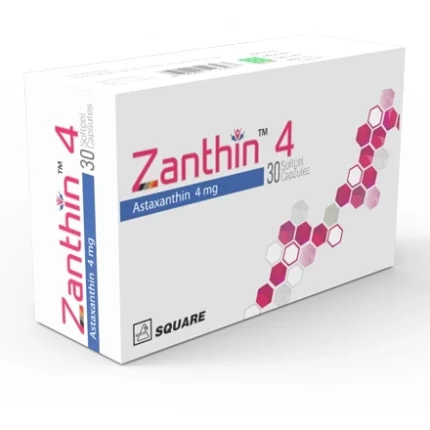Xetril 0.5
60.00৳ Strip
- Xetril is a benzodiazepine used for treating panic disorder and various seizure types, including those linked to Lennox-Gastaut Syndrome.
- It works by enhancing GABAergic neurotransmission, delivering anticonvulsive and anxiolytic effects.
- Xetril is effective for both short-term and extended treatment, providing reliable symptom control in panic disorders and epilepsy.
 Brand
Brand
|
Beximco Pharmaceuticals Ltd |
|---|---|
 Generics
Generics
|
Clonazepam |
 Type
Type
|
Tablet |
Indications
- Panic Disorder Treatment: Xetril is prescribed for panic disorder, with or without agoraphobia, characterized by sudden panic attacks and ongoing worry about future episodes.
- Epileptic Seizures: Effective as a primary or adjunctive treatment for Lennox-Gastaut Syndrome, akinetic, myoclonic, and absence seizures, particularly in cases where succinimides are ineffective.
- Long-term Use: While the effectiveness of Xetril beyond 9 weeks hasn’t been systematically studied, doctors should regularly assess its continued use for each patient.
Pharmacology
- Clonazepam Action: Xetril, containing clonazepam, a benzodiazepine, enhances GABAergic neurotransmission, providing anticonvulsive, sedative, muscle-relaxing, and anxiolytic effects. It quickly suppresses various paroxysmal activities in the brain, proving beneficial for both generalized and focal epilepsies.
Dosage & Administration
- Oral Administration:
- Adults with Seizures: Start with 1.5 mg/day, divided into three doses, adjusting by 0.5 to 1 mg every 3 days as needed. Maximum dose: 20 mg/day.
- Panic Disorder: Begin with 0.25 mg in two divided doses; increase to 1 mg/day after 3 days if needed.
- Pediatric Patients: Initial dose between 0.01 and 0.03 mg/kg/day, divided into two or three doses.
- Injection:
- Infants/Children: 0.5 mg via slow IV injection/infusion.
- Adults: 1 mg via slow IV injection/infusion, repeat if necessary (1-4 mg usually sufficient).
Interactions
Xetril does not significantly alter the pharmacokinetics of phenytoin, carbamazepine, or phenobarbital. Avoid use with meclophenoxate-containing products.
Contraindications
Not recommended for patients with benzodiazepine hypersensitivity or significant liver disease. Can be used with open-angle glaucoma under appropriate treatment but is contraindicated in acute narrow-angle glaucoma.
Side Effects
Common side effects include CNS depression, drowsiness (50% of patients), ataxia (30%), and behavioral changes (25%). Other effects may include eye movement abnormalities, confusion, hallucinations, and more.
Pregnancy & Lactation
- Pregnancy: Clonazepam may pose a risk of congenital malformations. It should only be used if the benefits outweigh the risks. High doses during late pregnancy or labor may affect the newborn.
- Breastfeeding: Mothers taking Xetril should not breastfeed due to small amounts of the drug passing into breast milk.
Precautions & Warnings
- Seizure Disorders: In patients with multiple seizure types, Xetril may increase or trigger generalized tonic-clonic seizures. Adjust other anticonvulsants accordingly.
- Valproic Acid Use: May result in absence status when used with Xetril.
Use in Special Populations
- Pediatric Use: Monitor infants and small children closely due to increased saliva and bronchial secretion.
- Geriatric Use: Benzodiazepines may have stronger effects in elderly patients, requiring careful monitoring.
- Renal Impairment: No dosage adjustment needed.
- Hepatic Impairment: Clearance of Xetril may be reduced in cirrhotic patients.
Overdose Effects
- Symptoms: Drowsiness, ataxia, and other CNS effects are common, with severe cases potentially leading to coma. CNS depressant effects may be more serious in patients with respiratory conditions.
- Treatment: Supportive measures and monitoring are essential. Activated charcoal may be used if administered within 1-2 hours. Flumazenil, a benzodiazepine antagonist, may be used cautiously.
Therapeutic Class
Adjunct anti-epileptic drugs, Benzodiazepine hypnotics.
Reconstitution
- IV Injection: Dilute with 1 ml of water for injection; administer slowly.
- IV Infusion: Dilute 1 mg in at least 85 ml of diluting media (e.g., sodium chloride, glucose solutions); stable for 24 hours.
- IM Injection: Use only if IV is not feasible.
Storage Conditions
Store in a dry place away from light and heat. Keep out of reach of children.













Reviews
There are no reviews yet.